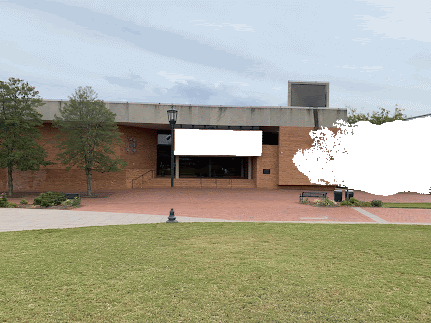For my project I tried to remake/remodel Rowe. All of my classes are technically in this one building now and so i tried to portray what it should look like being that this is one of the older buildings that are still on campus. I added windows to give it a sense of a more futuristic look while keeping the stairway and breezeway to leave a history still behind the building.
Wednesday, September 22, 2021
#architectural-blend
For this project, I wanted to capture a scene where it shows an old-looking town that is in line for demolition. I wanted to try and portray it as getting old filed with vines and growing rivers, while on the other side it's growing another community where they are improving in life instead of sticking with the old. I wanted to try to incorporate forests and things that would make it look like a forest almost.
Kelli Crockett - Architectural Blend
For my project, I used this small glass chest to create a glass house. When I think of my home, I think of how many years I have spent there and how much I've grown. Because of this, I decided to make a cacoon and butterflies represent my parents, older brother, and myself. I like the idea of a glass house because it holds no secrets and you can see everything inside at once. After living somewhere for such a long time, you know it inside out, every detail, just like looking through glass.
Architectural Blend- Brooke Hockspiel
Wednesday, September 15, 2021
Wednesday, September 8, 2021
Warren Coleman Manufacturing
Coleman Manufacturing Company was the first textile cotton mill in the United States owned and operated by African Americans in 1897 organized by Warren Clay Coleman. The Mill was located 2 miles from the county seat in Concord. Richard B Fitzgerald, a businessman of Durham, NC was the company first president. The mill was “allowed” to spin, weaved manufacture, finish and sell warps, yarns, cloth, prints and other fabrics like wool, cotton and other materials. Black workers was hired here and had the chance to learn industrials skills but financial problems began to take place and in 1904 the company was unable to remain open once Coleman died. The bottom Image is the original image and the top is the one from today. I tried to portray what is that we see today compared to the old. Most of the building is tore down and windows covered.
Wet Plate Collodion Project - Andrew Vongphachanh
Wet Plate Collodion Project - Kelli Crockett
For my project, I wanted to depict an older looking instrument that is slightly out of place. I chose the autoharp because it was popularized in the 1950s, though in the context of a digital wet plate, you would assume it to be older. I combined this with modern jewelry as well, to further curve our understanding of when this image could have been taken just from an initial viewing of it.
From the library of congress, I used the borders off of two images from 1862. I created the rest of my textures using my and Jeff's custom brushes and many different blending modes.
Wet Plate Collodion- Brooke Hockspiel
Tuesday, September 7, 2021
Wet Plate Collodion - Dominic DiNardi
My concept was to show what a young adult/ teen would be doing on a hot summers evening in modern times, when back than there was wars, battles, violence, etc. Young adults/ teens would be fighting in wars, working, or doing something not as fun as what we could do today. I also added images from baseball games and hot dog stands on the street to symbolize the grilling and food aspect behind this image. You cant really see the baseball image but it is mixed in there.












